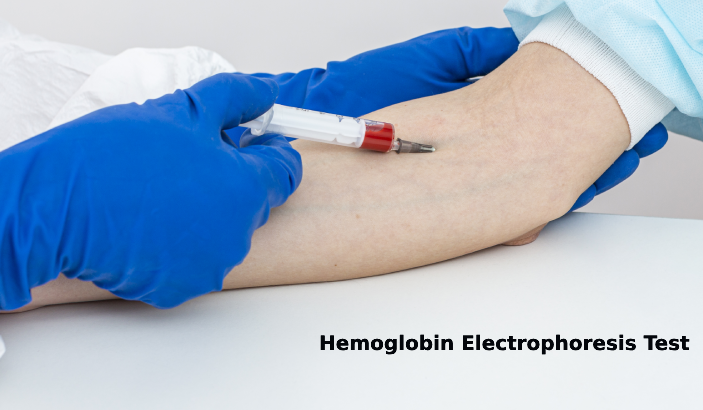Hemoglobin electrophoresis is a specialized blood test used to identify various forms of hemoglobin in the blood. It is crucial for diagnosing blood disorders like sickle cell disease, thalassemia, and other hemoglobinopathies.
Purpose of Hemoglobin Electrophoresis Test
- Diagnosis of Hemoglobinopathies: The primary purpose of the test is to identify abnormal types of hemoglobin that may indicate disorders such as sickle cell anemia, thalassemia, and other related conditions.
- Guiding Treatment Plans: Determining the specific type of hemoglobin variant helps in developing appropriate treatment and management plans for patients.
- Screening Tool: In some regions, hemoglobin electrophoresis is used as a screening test to detect carriers of conditions like sickle cell trait or thalassemia trait, particularly in populations where these diseases are prevalent.
Procedure of Hemoglobin Electrophoresis
- Sample Collection: Blood is typically drawn from a vein in the arm. The procedure is similar to that of a regular blood test, where a small needle is used to collect blood into a vial or tube.
- Laboratory Processing: The collected blood is treated with a special buffer and placed on a specific type of gel.
- Electrophoresis: An electric current is passed through the gel, causing different types of hemoglobin to move at different rates. This separation helps identify the various hemoglobin types based on their migration patterns and affinities.
- Analysis: The results are visually analyzed, and sometimes specific stains are used to highlight the bands of hemoglobin for easier identification.
Normal Range
- Typical Hemoglobin Types: Normal adult hemoglobin typically consists of Hemoglobin A (HbA), which should make up about 95-98% of hemoglobin, and Hemoglobin A2 and F (fetal hemoglobin), each making up 2-3% or less.
- Interpretation of Normal Results: The presence of predominantly Hemoglobin A with small amounts of A2 and F typically indicates normal hemoglobin distribution.
Results Interpretation
- Abnormal Results: The presence of abnormal hemoglobin types such as Hemoglobin S (HbS) in sickle cell disease, Hemoglobin C (HbC), or elevated levels of HbA2 or HbF may indicate a hemoglobinopathy.
- Carrier Status: Identification of hemoglobin variants like HbAS (sickle cell trait) or beta-thalassemia minor can indicate carrier status, which is crucial for genetic counseling.
- Diagnostic Confirmation: Results from hemoglobin electrophoresis can confirm diagnoses suspected based on symptoms, family history, and other laboratory tests.
Hemoglobin electrophoresis test is used for identifying various types of hemoglobin and diagnosing related blood disorders. The test is straightforward, requiring a simple blood draw with minimal risk, and does not necessitate special preparation. As such, hemoglobin electrophoresis plays a crucial role in the early detection and management of hemoglobinopathies, improving patient outcomes through tailored therapeutic approaches.
I specialize in writing about health, medical conditions, and healthcare, drawing extensively from scientific research. Over the course of my career, I have published widely on topics related to health, medicine, and education. My work has appeared in leading blogs and editorial columns.









